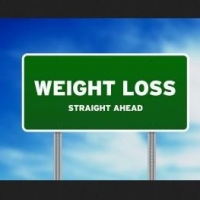Lose Weight > Weight Loss Tips > Weight Loss Articles > Weight Loss - Which is Better, High or Low Intensity Exercises?
Weight Loss - Which is Better, High or Low Intensity Exercises?
Let us first talk about what is Low Intensity Exercise and what would be considered High Intensity.
A brisk walk comes under the category of Low Intensity Exercise, while a run would be considered High Intensity; this is when your heart beats faster.
During High Intensive exercise, your body burns Glycogen. Glycogen is a substance that is made up of carbohydrates and is stored in your liver and muscles. So when you need a burst of energy the Glycogen will be converted to energy and is readily available.
Some Scientists reported that you could burn body fat by doing Low Intensive exercise. So immediately, people changed their exercise routine and started doing Low Intensive exercises.
But the Low Intensive exercises are apparently not working too well, you just have to look around you at the still overweight people who despite doing their exercises regularly are not losing weight. Why is this?
Let's look at the facts as we know them:
What Is The Difference Between Burning Body Fat and Burning Calories?
The Scientists realised that during Low Intensity Exercise such as walking or a leisurely swim, the body burns more fat.
They also found that although a Low Intensity Exercise may help you lose weight, doing High Intensity Exercises helped build muscles. Often when on a slimming diet, you will not seem to be losing weight; this is because you are building muscles instead.
People are inclined to mistake muscles for fat yet this is not true. I'm not talking about bulging biceps but muscles when well toned help keep the body working efficiently. So a muscular body could be a sign of good health.
However, when running you would be burning more Calories. It is good to burn calories. When you eat, you are taking into your body calories. Therefore to lose weight you must burn more calories per day than you take in with your food.
So if you do Low Intensity Exercises, that will burn body fat, after you have finished exercising and cooled down, that will be it. In other words no further benefit to you.
If you compare this to doing High Intensity Exercises, you will burn Calories and increase your metabolism. Even after you have finished with your workout, you will still be losing body fat for hours afterwards.
We talked about Glycogen earlier; when you exercise you use up some of your Glycogen stores. This means that to top up your Glycogen stores, when you eat the Carbohydrates will be converted to Glycogen instead of Body Fat.
How To Get The Best of Both Worlds
Low Intensity Exercise or High Intensity Exercise, both have advantages. But people on Low Intensity Exercises are inclined to NOT lose weight or go on to yo-yo dieting, when your weight will go up and down, hence the term yo-yo dieting.
Why not do both High and Low Intensity Exercises at the same time?
You could start off by taking a brisk walk for say 5 minutes, this is the Low Intensive Exercise, then run for 5 minutes, and this is the High Intensive Exercise. When you are breathless and your heart is pumping, slow down and start walking briskly again. This is called Interval Training. So if you keep alternately walking and running for a minute at a time, you will be doing yourself and your body a great deal of good.
Do this Interval Training 5 times a week and you will soon see your body becoming lean and mean, with an improvement to the whole of your health.
Just to reminisce, my friend and I when we were late getting back to school would do this walk / run regime and it was amazing how quickly we reached school. But we didn't know 55 years ago that it had a fancy title of 'Interval Training'.
If you want to lose weight, try alternating High Intensive Exercise with Low Intense Exercise. You will soon be losing weight and feeling great.
Copyright 2006 Eva Moffat
Related Articles
-
Tips To Lose Your Stomach Fat
Tips to lose your stomach fat? The Truth About Abs is the number one s
-
Reasons to Try a Fresh Fruit Juice Diet
In recent years the world has filled with fad diets, get slim quick tr
-
Water Weight Loss... A Temporary Fix
You need to understand the concept of water weight loss, as
-
Confessions From A Fat Doctor
I never intended to get fat! I am not exactly sure h
-
Fat Burners, Diet Pills, and Carb Blockers - Whats the Difference?
All of these fat loss supplements are designed to help you lose weight
-
Fidgeting: The Natural Weight Loss Diet
It’s now official. The simple act of fidgeting can mean the d
- DON'T MISS
- I Want To Lose Weight - Well Stop Making Excuses!
- 7-Day Belly Blast Diet Overwiew: The Fastest Method to Get Rid Of Stomach Fat
- Need A Good Diet To Lose Belly Fat? Grab This Meal And Exercise Plan If You Want To Lose A Lot Of Weight! - Ever Loss
- Got a Spare Tire Around Your Middle? Go To The Garage!
- Best Diet to Lose Weight in 2 Weeks – Fantastic Diet Program without Starvation Diet
- Hoodia Natural Diet
- Aerobic Fat Burn
- The Biggest Myth about Cellulite
- Week 20: An unwelcome companion
- Lose Weight Tips - 3 Tips to Help You Lose Weight Quickly!




